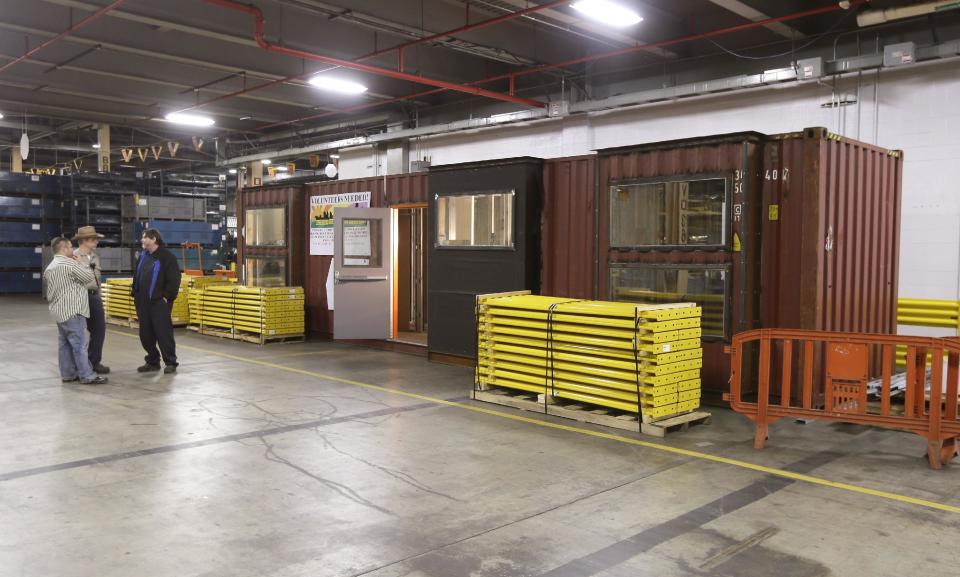 |
| http://www.elistmania.com/ |
After 19 years in Brooklyn,
Galapagos Art Space is moving to Detroit, where you can still buy a romantically cast-off industrial building for cheap, just like you used to be able to do in the gritty old New York, before it turned into a polished bauble of global capitalism and everyone in the world decided they wanted to live here. Whether or not you’ll miss Galapagos, cared much for its programming, or ever saw anything there in the first place, its executive director declared to the New York Times that its leaving town was symptomatic of how “a white-hot real estate market is burning through the affordable cultural habitat.” In Detroit — which is just a two-hour flight away — Galapagos could afford to buy up an entire ruin-porn campus of nine buildings in Corktown, and is thinking of expanding it mission to start a Detroit Biennial in 2016.
And why not? The Detroit area might be home to two good art schools, the century-old Cranbrook Academy of Art and the College for Creative Studies, but the artists they produced often left town for opportunities and like-minded people in places like New York. And there weren't many reasons for people to move to Detroit. Sure, the Detroit Institute of Arts is a world-class museum, but like so much of what is so impressive there, it’s a relic of an imperial industrial capital that no longer exists, and for a while there was a plan considered to sell its collection to pay off the city’s debt.
But hey, things looked pretty bad here in New York in the '70s, too, when it was an “affordable cultural habitat.” It had the mystique of a place where you could make something new happen, which Detroit is also starting to be known for. I recently spent a couple of days there, witnessing the intense little pockets of recognizable Brooklyn-ish-ness that have sprung up, where the just-so work of creating another twee urban utopia is being done. These are also places where the racial demographics of the city are noticeably reversed. (In the 2010 census, Detroit was made up of 83 percent black people.) The new shops and restaurants often feel alienating to many who didn’t flee for the suburbs when things got rough, and who think of Detroit as theirs. That struggle continues, but these new urban migrants are good for the city’s tax base.
I also got to meet some of the artists who live and work here: Elysia Borowy-Reeder, the director of the Museum of Contemporary Art in Detroit, wrote up my itinerary, and introduced me to people. I started the day at the ReView Gallery, which is in an old building not far from the Detroit Institute of Arts, and run by Simone DeSousa, a Brazilian woman who lives in one of the perfect loft condos upstairs (many of which haven’t yet been built out, since the market’s not quite there yet) and who started the gallery because she felt that Detroit didn’t have enough galleries to support the artists who live there.
Borowy-Reeder is married to Scott Reeder, a successful artist who shows all over the world. The pair live in a Mies van der Rohe–designed housing complex (Detroit is littered with what was once the cutting edge in urban planning) on the edge of downtown, and I visited Reeder in his studio in the mammoth Russell Industrial Center. Actually he has two — one with a closet-size space he’s turned into a tiny comedy-club-and-disco called “Club Nutz,” and another with a door that opens out into the open air many floors up. I drove around and met up with Greg Fadell, whose studio is on the top floor of an old schoolhouse, and James Collins, who lives in a sunny old arts-and-crafts house, and Adam Lee Miller and Nicola Kuperus, who also operate as the band Adult, and who live in a perfect old near-mansion in a neighborhood called New Center, which for years was the headquarters of General Motors. GM paid to have the area gussied up and preserved during the white-flight days of the 1960s, but the house was still cheap enough for a couple of bohemians to buy it.
At the end of the day, a bunch of us convened at Antietam, a just-opened restaurant in an Art Deco storefront run by Gregory Holm, a Detroiter who lived in New York for nine years. The interior is a stridently tasteful concoction of retro-glamour elements, some of which Holm salvaged himself, Indiana Jones–style, from Detroit’s many grand old buildings gone to seed. There aren’t too many places like this here, at least not yet. Here's why these nine artists live in Detroit.
 Scott Reeder
Been in Detroit:
Scott Reeder
Been in Detroit: Two years
Why he came: "My wife is the new director of MOCAD. We are both originally from Michigan so it was an easy transition."
Why he stays: "I like being in a place that still has a lot of possibilities. Detroit has an amazing cultural history, but it's also always changing,, especially recently, and it's exciting to be part of that energy."
What he does there: "I'm mostly known as a painter, but I also do performance, help run the worlds smallest comedy club, and just completed my first feature film Moon Dust."
Click HERE for the full article!









.jpg)







